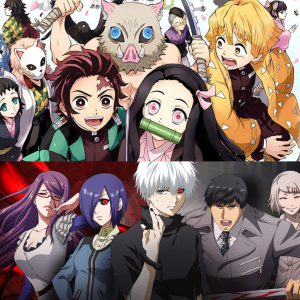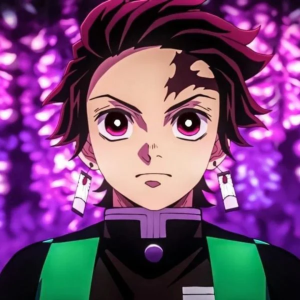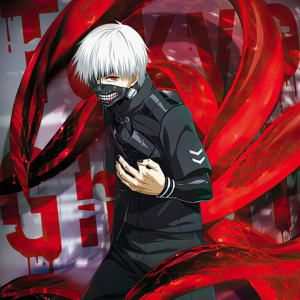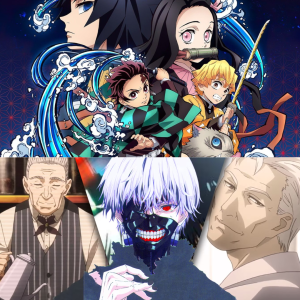Refer to this website with a variety of new online comic books updated at: https://nettruyenzzz.fun
A Comprehensive Comparison of Kimetsu no Yaiba and Tokyo Ghoul
For fans of action-packed manga with intense storylines, Kimetsu no Yaiba (Demon Slayer) and Tokyo Ghoul stand as two iconic series in the world of Japanese manga and anime. Both have made indelible marks in their genres, captivating audiences with their gripping narratives, memorable characters, and thought-provoking themes. But what sets these two apart, and what similarities make them resonate so strongly with their audiences? Let’s dive deeper into the comparison between these two masterpieces.
Similarities Between Kimetsu no Yaiba and Tokyo Ghoul
Dark, Supernatural Themes
At their core, both Kimetsu no Yaiba and Tokyo Ghoul explore worlds where humanity coexists with deadly supernatural beings. The demons in Kimetsu no Yaiba and the ghouls in Tokyo Ghoul are terrifying predators that create tension and conflict throughout the stories. Despite their differences in nature, both supernatural entities serve as symbols of fear and suffering in their respective universes.

Tragic Beginnings for the Protagonists
One of the strongest points of similarity is the tragic backstories of their main characters:
- Tanjirou Kamado in Kimetsu no Yaiba starts his journey after the brutal murder of his family by demons, with his sister Nezuko transformed into one. His journey is driven by a mix of vengeance, love for his sister, and a desire to protect others from suffering the same fate.

Read more about the detailed review of this series here
- Kaneki Ken in Tokyo Ghoul begins as an ordinary university student but is forcibly thrust into a horrific new world after a freak accident makes him half-ghoul. He struggles to reconcile his human side with his ghoul instincts, making his journey intensely personal and psychological.

Both characters’ traumatic beginnings make them relatable, as readers empathize with their pain and root for their growth.
Themes of Humanity and Morality
Both series go beyond surface-level action to explore deeper philosophical questions. They challenge traditional notions of morality, showing that the “monsters” aren’t purely evil, and humans aren’t entirely virtuous. This nuanced portrayal of good and evil allows the audience to view the supernatural antagonists with sympathy while questioning humanity’s own darker instincts.
Stunning Artistic Styles
The artistic execution of both series elevates their storytelling.
- Kimetsu no Yaiba is known for its vibrant colors and breathtaking battle scenes, particularly in its anime adaptation, which pushes the boundaries of animation quality. The intricate designs of the characters and their breathing techniques add a unique aesthetic appeal.
- Tokyo Ghoul, on the other hand, leans into a darker, grittier art style that captures the despair and horror of its world. The detailed depictions of gory fights and Kaneki’s psychological torment make the manga visually striking in its own way.
Massive Global Popularity
Both series have become global phenomena, with successful manga sales, critically acclaimed anime adaptations, and an enduring fanbase. They are prime examples of how Japanese storytelling can appeal to international audiences, transcending cultural barriers.
Differences Between Kimetsu no Yaiba and Tokyo Ghoul
Setting and Worldbuilding
- Kimetsu no Yaiba transports readers to Japan’s Taisho era, a historical period that blends reality with fantasy. The world is richly detailed, with demon slayers wielding Nichirin swords and mastering elemental breathing techniques to combat demons. The historical setting adds depth and a sense of nostalgia to the story.
- Tokyo Ghoul, by contrast, is set in modern-day Tokyo, creating a stark juxtaposition between the bustling urban landscape and the dark, hidden underworld of ghouls. The grounded setting makes the horror elements more visceral and relatable.
Plot Structure
- Kimetsu no Yaiba follows a straightforward, linear storyline where Tanjirou’s objective is clear: to defeat Muzan Kibutsuji, the progenitor of all demons, and restore Nezuko’s humanity. This structure provides a sense of purpose and direction throughout the series.
- Tokyo Ghoul is more complex and layered, focusing heavily on Kaneki’s internal struggle. The narrative often shifts between perspectives and delves into the socio-political dynamics of the ghoul community, adding a psychological and philosophical dimension.
Protagonist Growth
- Tanjirou’s growth in Kimetsu no Yaiba is rooted in his unyielding resolve and his compassion for both humans and demons. His journey is one of external battles and internal moral dilemmas, making him a symbol of hope and perseverance.
- Kaneki’s evolution in Tokyo Ghoul is far darker and more tumultuous. His transformation from a timid student to a powerful yet tormented figure is marked by immense psychological trauma. His struggle with identity and acceptance forms the crux of the series.
Tone and Atmosphere
- Kimetsu no Yaiba strikes a balance between heartwarming moments, emotional depth, and intense action. While it explores dark themes, it also emphasizes hope, family bonds, and the beauty of resilience.
- Tokyo Ghoul maintains a consistently dark and oppressive tone, delving deep into themes of alienation, existentialism, and despair. The horror elements are more pronounced, creating a grim atmosphere.
Fight Choreography
- The battles in Kimetsu no Yaiba are characterized by intricate swordplay and visually spectacular breathing techniques tied to elements like fire, water, and lightning. These fights are not only thrilling but also artistically mesmerizing.
- In Tokyo Ghoul, the combat focuses on brutal, raw power, with ghouls using their kagune (predatory organ-like weapons) in violent, visceral confrontations. The fights are more about survival than elegance, reflecting the series’ darker tone.

Comparison Table
| Aspect | Kimetsu no Yaiba | Tokyo Ghoul |
|---|---|---|
| Popularity | ⭐⭐⭐⭐⭐ | ⭐⭐⭐⭐ |
| Manga Sales | Over 150 million copies | Over 40 million copies |
| Anime Adaptation | Critically acclaimed, stunning visuals | Dark, intense, thought-provoking |
| Main Theme | Family, hope, and resilience | Identity, alienation, and morality |
| Art Style | Vibrant, detailed battle scenes | Dark, gritty, psychological |
| Character Development | Steady, driven by external goals | Complex, focused on internal struggles |
| Tone | Balanced, uplifting yet emotional | Dark, melancholic, and introspective |
| Global Fanbase | Highly mainstream appeal | Cult-like following |
| Overall Score | 9.5/10 | 8.5/10 |
Final Thoughts
Both Kimetsu no Yaiba and Tokyo Ghoul are masterpieces in their own right, offering fans a unique blend of action, emotion, and depth. However, their appeal lies in different aspects:
- If you prefer a clear narrative with stunning visuals and emotionally uplifting moments, Kimetsu no Yaiba is the way to go.
- For those who enjoy darker, more psychological stories that explore existential themes, Tokyo Ghoul is a must-read.
What’s your favorite action manga adaptation? Let us know in the comments below—your recommendations might lead someone to discover their next favorite series.
